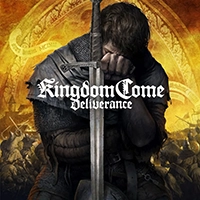

When it comes to visual novels, the concept of bad endings is abundant, hanging over the player as they make pivotal choices in the story. For some, they can leave a bad taste in their mouth after spending a while getting acquainted with the characters and the world, while for others, the bad endings lend a more interesting aspect to the story. With Bad End Theater, it’s all bad endings, no matter what you do. With such an interesting concept, how does the game actually hold up?
You play as an omnipresent character who wanders into a strange theater, known as the Bad End Theater. In this building, you will get to experience nothing but bad endings. The game is straight to the point, giving you access to four different characters who find their paths intersecting one random day: the hero, the maiden, the underling, and the overlord. At first glance, their stories seem very simple, but with decisions made and choices made, a new path will unfold, bringing you closer to the true ending for all four characters.

The general story is that the hero hears that a maiden has gone missing, likely due to the demons that are hiding in a castle not far from the village. But little did they know that the maiden actually went to the demons of her own accord, due to hearing that it was her destiny to be captured by demons and rescued by the hero. Meanwhile, the underling feels overworked and at ends with his overlord. As for the overlord, she is constantly tired, always finding herself napping when she’s not yelling at their underlings.
The game is surprisingly quick, with each character having their own set of endings depending on how the other main characters interact with them. The storytelling is simplistic, and yet it shows how simple stories can leave an impact. It’s a story that discusses second chances and the concept of predetermined paths. Can we change our destinies simply because we desire to do so? But on the flipside, because the game is so short, there aren’t a lot of chances for the game to really dig in and develop the cast, story, and world surrounding these characters.
Across the entire game, there are a total of 43 possible endings. Early on, you’ll unlock an ending guide, which will help you to figure out which endings you need (especially if you’re looking to 100% the game, which isn’t difficult to do). At first, the endings are straightforward, but as you explore the different storylines, unlock new character traits, and experiment with various combinations, you’ll find yourself drawn into sadder situations. One single trait can change the trajectory of an ending.

Bad End Theater mixes visual novel and puzzle game aspects to give the player a unique experience while watching the stories unfold. You are given the choice to play through any of the four characters’ stories. You’re not locked into one character after making a choice, so if you choose to play through the hero’s story first, you can complete an ending for them and then switch over to a different character. In fact, that is pretty much the best way to play through the game. As you make choices, you’ll sometimes pick up character traits, which affect how a character will interact with the other main characters. For example, if the hero is given the dutiful trait, they are more inclined to fight against the demons, rather than taking a more cautious response.

You can attach multiple traits to a character, and you’ll find that mixing and matching will result in the characters reacting in ways that are expected. The game keeps track of the endings that you complete, which you can reference at any time if you’re ever lost. Every character has their own true ending that you’ll need to find, and while it’s likely that you’ll find all four true endings, finding all of the endings is worth it, if nothing else, than to see all of the different ways the characters can meet a tragic end. Due to the relationships of the characters (the hero and the maiden, the underling and the overlord), there will be some overlap with the endings, just with a perspective change.
The entirety of the game’s art is pixel-based and very charming. The color palette is different depending on the character you’re currently on, and each character is given its own color. The art, like the story, is simple yet charming. The cuteness of the art feels as though it shouldn’t mix with the tragic nature of the game, and yet, it fits very well. It’s almost like a storybook. The music is retro in sound, akin to older games that you’d play on a Gameboy. It’s nostalgic and brings the whole game together, especially as the songs range from upbeat to mellow.

Bad End Theater is a surprise to play through, and in the best way. It’s short, simple, and to the point with its story. The art and music are lovely to take in, and as you explore the various tragic endings, none of them leave an overwhelming sense of misery behind. Rather, it leaves the player wanting to see more and explore the endings available. The puzzle aspect was an interesting twist to make the game more interactive. It’s a charming visual novel/puzzle game that is worth taking a look at, should you have the chance.
Bad End Theater gets a 7/10.